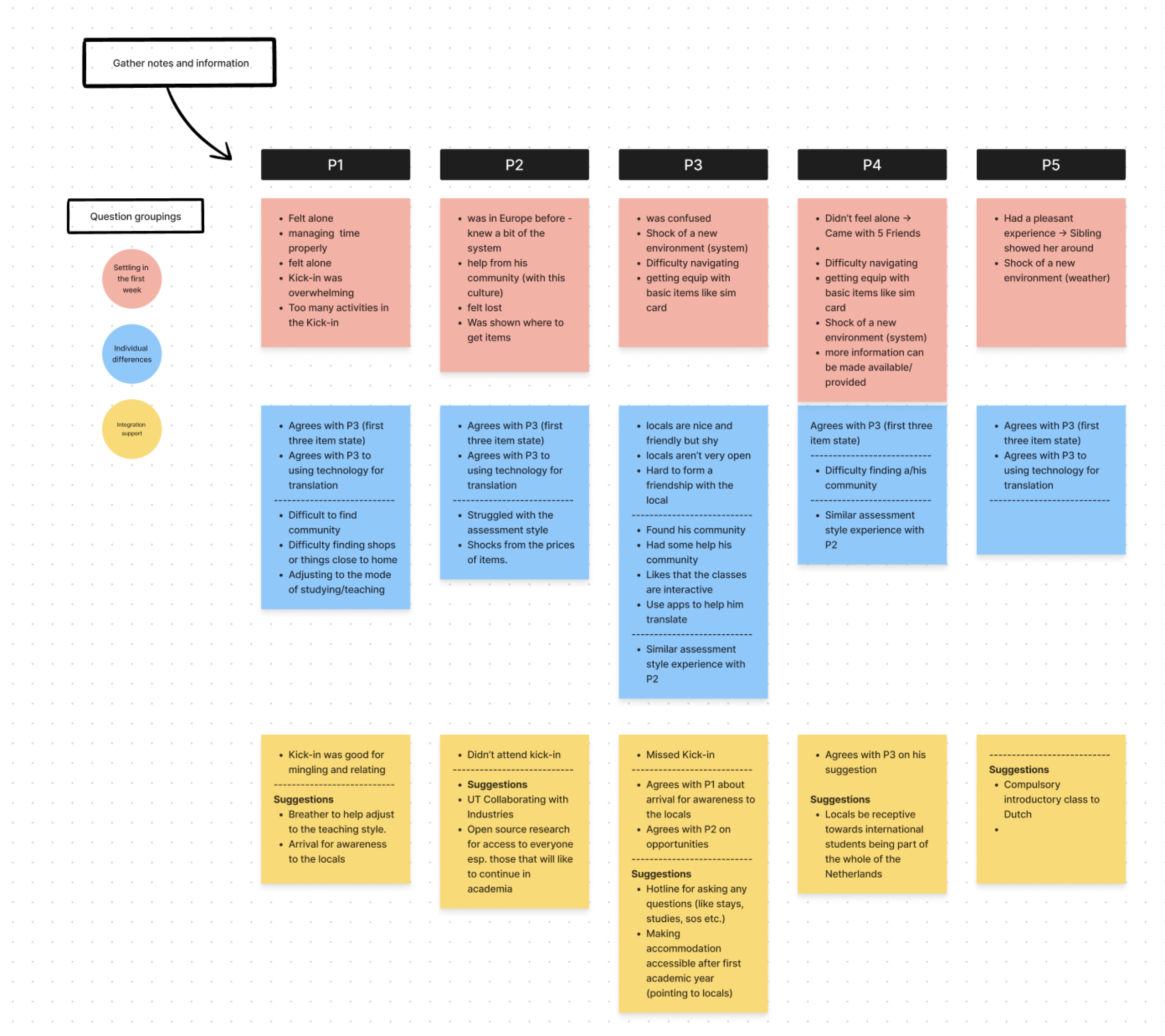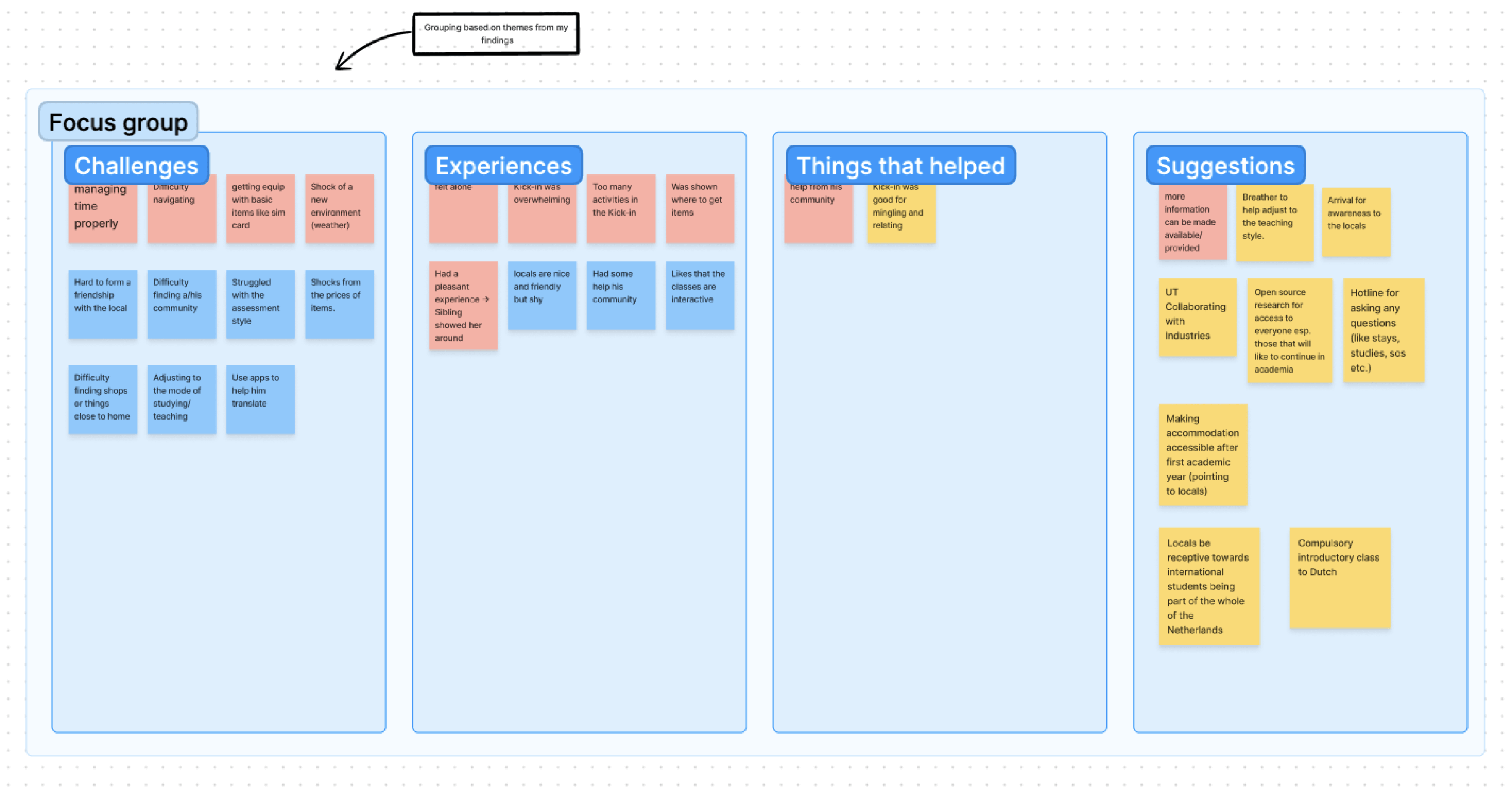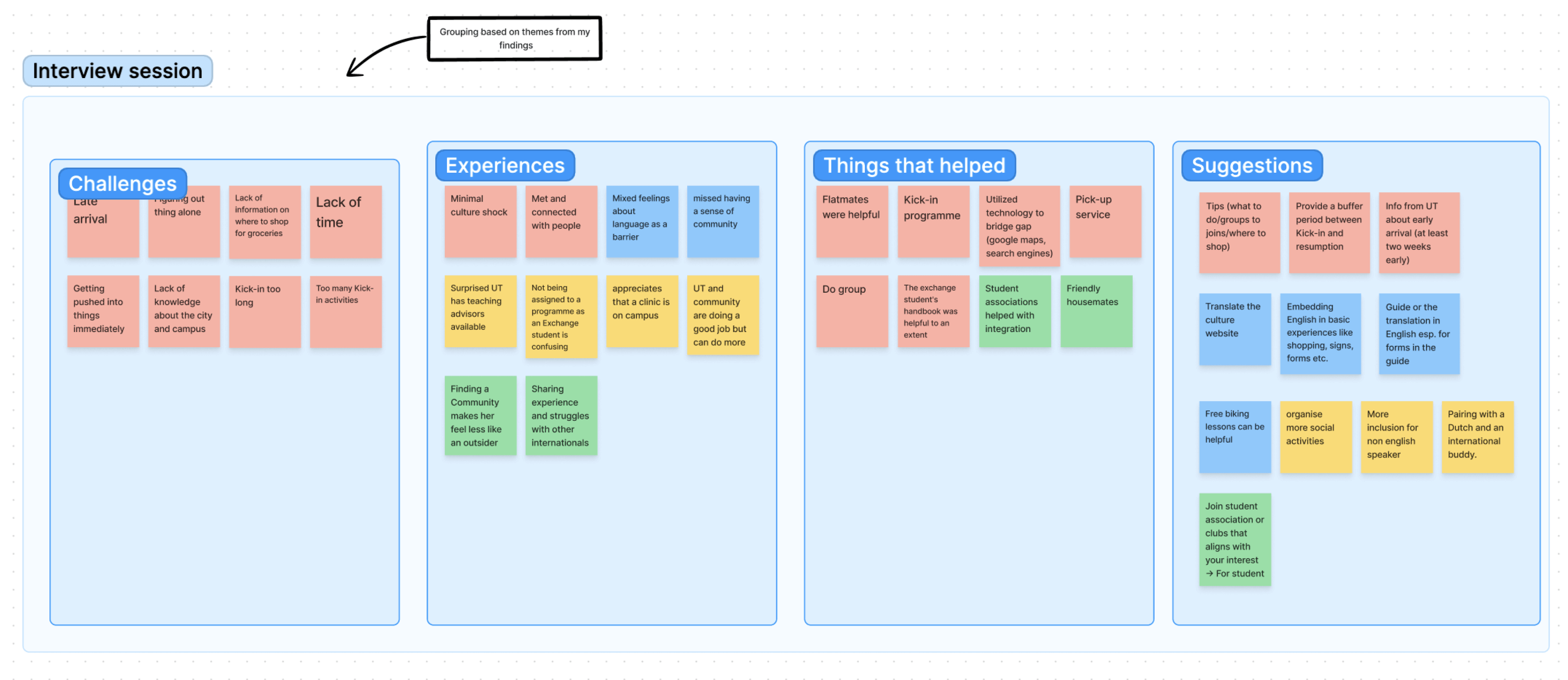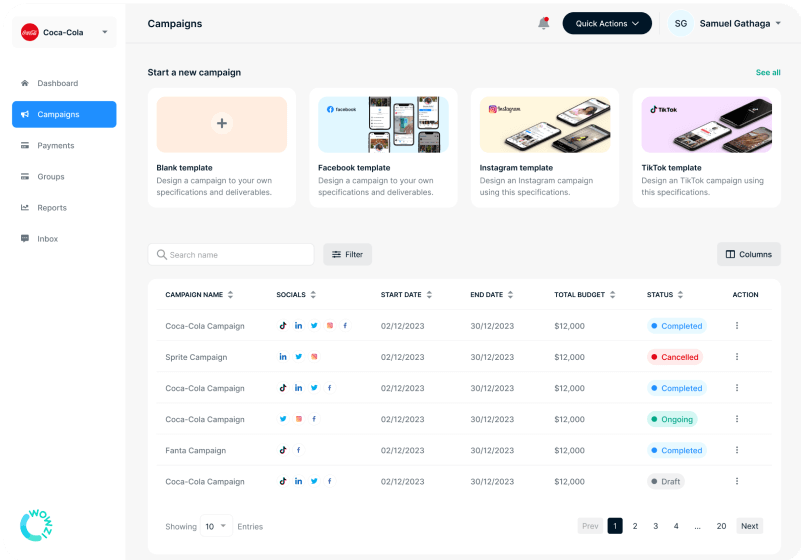October 2023
Improving International Students' Integration into Enschede.

Overview
People migrate for different reasons, including work, economic opportunity, to join family, or to study. Enschede, Netherlands has become home to a diverse and growing international student population due to its renowned educational institutions.
Settling into a new environment is more challenging than we usually imagine. There are many challenges that international students can face when trying to integrate into a new community. For example: feeling isolated or homesick, including a store for groceries that you will typically not get at a regular store, knowing the basic administrative things they need to do, etc.
Objective and Scope
This study focuses on gaining insights into the experiences of the diverse international students in Enschede, learning about the challenges they face in integrating into the local community, and potentially exploring solutions that can enhance their integration process into Enschede.
Hence, the study explores two research questions, which are:
- To what degree does the role of individual (whether personal or cultural or any other) differences affect students in the first month, especially for those who have never left home before?
- What are the most effective ways to support international students in integrating into the local community?
Methods used
To identify ways to achieve the research goals, answer the research questions, and determine whether “integration” is really a problem in Enschede, I used a triangulation approach by combining four different UX research methods: Focus group, Surveys, Interviews, Card Sorts.
By using a triangulation approach, I was able to gain a comprehensive understanding of people's experiences with settling and integrating into Enschede. It also helped reduce bias and increase the validity of my findings.
Focus group
This activity was chosen as a starting point to gain insights into international students' experiences, learn about their struggles, and determine whether integration was an actual challenge. This activity consisted only of students who had recently arrived, <= 1 month, in Enschede to mitigate telescoping bias.
In the session, participants were asked to share their experiences in their first week of arrival (arrival was different for each participant due to certain circumstances), the impact of their differences, the support they had received so far, and make suggestions.
The session was semi-structured, and there were follow-up questions where applicable. It lasted for 1 hour and was conducted in person. A round-robin was used to ensure everyone participated, but the discussion was also free-flowing and unstructured. The session was audio recorded and had a notetaker who doubled as an observer. In total, there were five (5) participants recruited through convenience sampling. The group was diverse in nationality, gender, and enrolment (UT and ITC; Master's and PhD).

The analysis revealed insights into the different integration issues, addressing the first two research objectives and confirming that integration is a challenge. Suggestions for support were also collected to address the third research objective. The data was sorted into four categories.

Survey
The survey served as a horizon scan to better understand the general experience international students face in their first week and beyond. It also helped identify patterns of integration challenges and student opinions on a larger scale.
The survey consisted of 18 questions about experiences, differences, and support. The survey consisted primarily of closed-ended questions with very few compulsory questions. It was designed to minimise participants' cognitive effort and reduce drop-offs. The survey was created using Google Forms, which was accessible on multiple devices and allows for several types of answers (open questions, multiple choice, checkboxes, and Likert scales).

Interviews
The focus group and survey revealed that people's integration experiences are similar yet unique. These findings informed some of the interview questions.
Two participants were recruited through a convenience sample. The interview sessions were conducted in person at locations that were convenient for the participants and optimized for attention and allowed for the opportunity to capture nonverbal cues.
The first interview lasted for 35 minutes while the other for 45 minutes, and this depended on how much each participant had to say. Both interviews were audio recorded. The first interview had a notetaker who doubled as an observer, while the second had neither.
After conducting the interviews, the transcripts and notes were analysed using an affinity diagram to identify similarities and differences in the integration challenges faced by the interviewees based on their personal stories and experiences. The findings were grouped into four categories and then summarised.

Card sort
With the three methods described above, a significant amount of information was collected, including suggestions from international students on improving integration. To achieve the third objective, the data was used to develop cards for the card sorting activities.
Four participants were recruited through a convenience sample for two card-sorting sessions, with two participants in each session. The first session was an open card sort, where participants were asked to sort the cards into groups based on how they relate to each other and named each group. In the first card sort, four categories were generated. The second session was a closed card sort to validate the group names curated from the first session. Also, discussions were had on each sort.

By the end of the open card sort session, we had four named categories/themes with descriptions:
- External support (Community based student support): How the community/Enschede can better support international students.
- University support: How University of Twente (UT) can better support students.
- Arrival and orientation support: How students can be better support in their first week.
- Internal support (Student-community relationship): To help trigger smooth adaptation between students and the community.
The open and closed sorts had some similarities in their groupings. Both sorts had two similar cards in the UT support group: a buffer period between the Kick-in and resumption, and integrating introduction to Dutch into the university's syllabus. They also had three similar cards in the Arrival and orientation category: awareness on arrival, a hotline or questions and seeking help, and fewer activities in Kick-in. These similarities were present in all categories in both sorts.
Result
International students face significant challenges during their first month, particularly those new to living abroad. Individual differences, such as personality and cultural background, greatly impact their adjustment. Common difficulties include culture shock, language barriers, academic adaptation, and social isolation. Technology, like Google Translate and Maps, played a key role in overcoming some of these challenges.
To aid integration, the research suggests making Dutch language mandatory for all international students. This would enhance communication, social interaction, and future job prospects. The findings from surveys and card sorts support the importance of both academic and social support for students.
Conclusion
This research explored how individual differences impact international students' experiences of settling in. Findings suggest that building a social network is crucial for successful integration. Future research could focus on identifying the individual differences that most impact students' integration, expand the sample size, and explore additional integration strategies.
This case study was done for a research during the first year of my Master's degree in Interaction Technology at the University of Twente. To read the full report,


